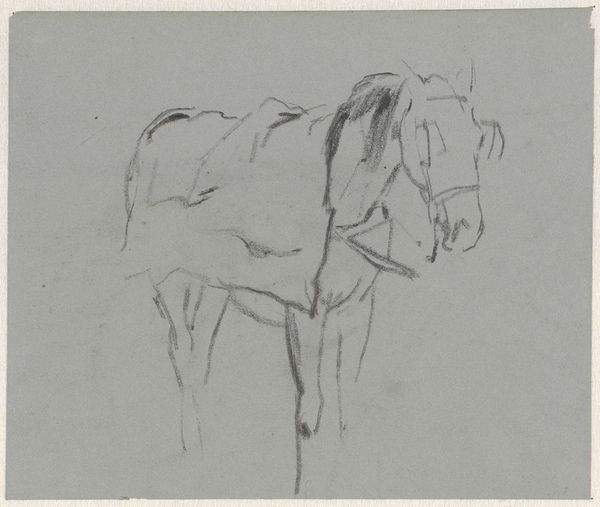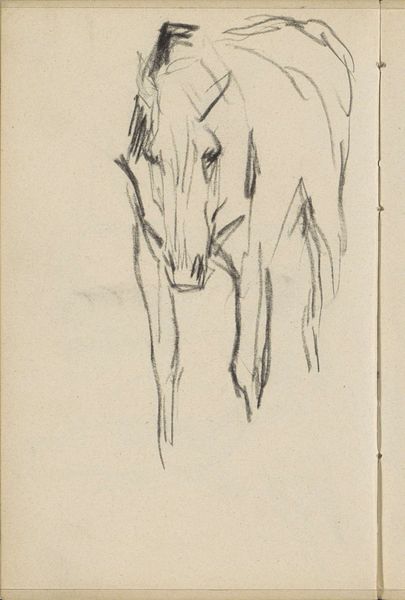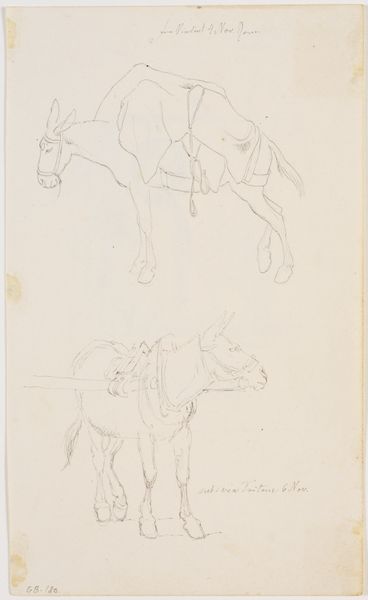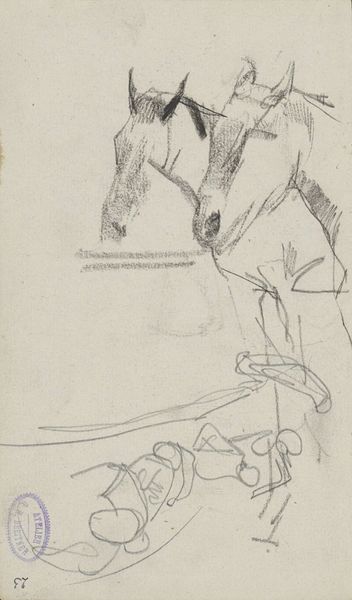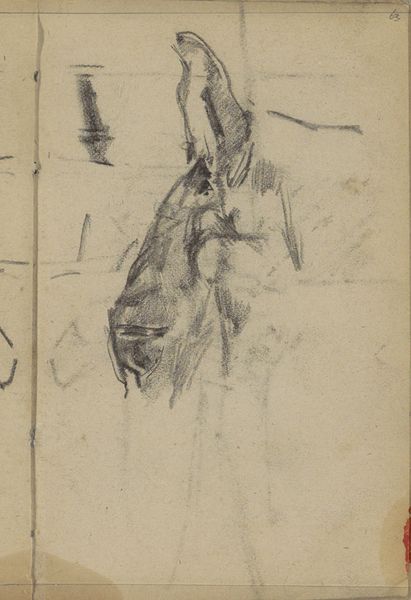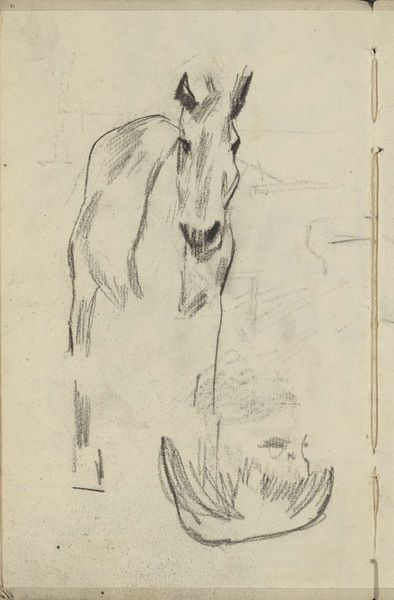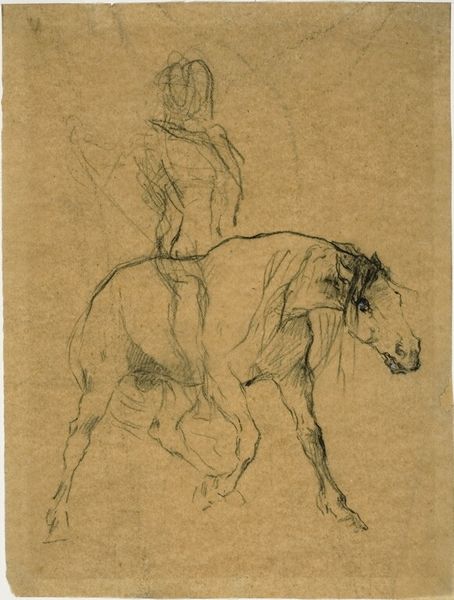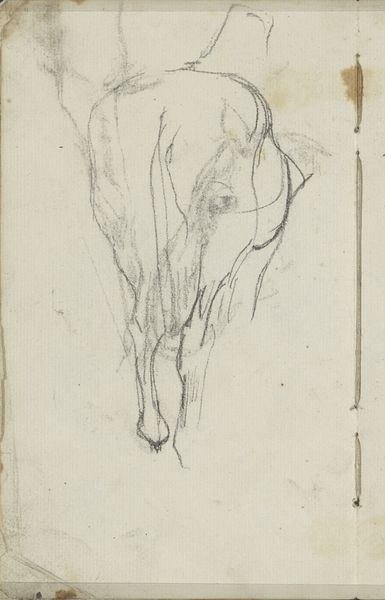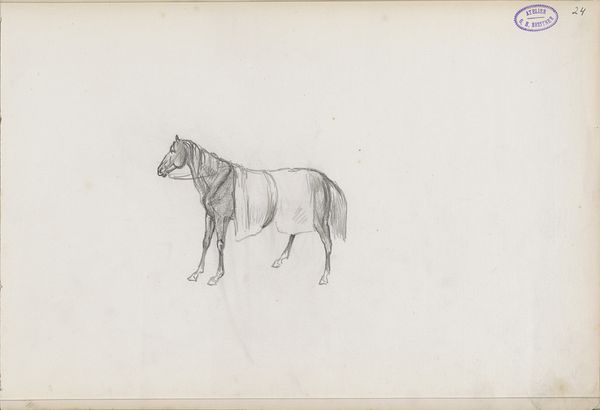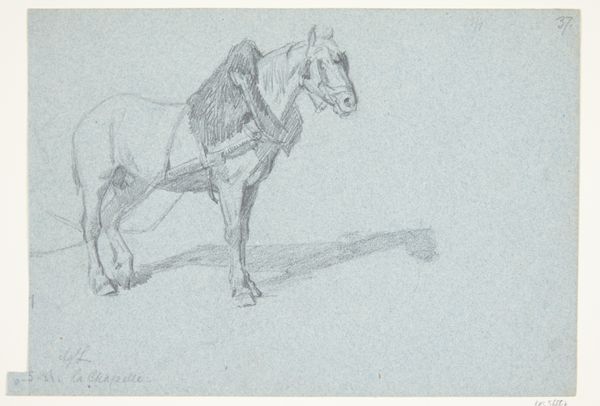
drawing, pencil
#
drawing
#
pencil sketch
#
figuration
#
pencil
#
horse
#
line
#
realism
Copyright: Rijks Museum: Open Domain
Editor: Breitner's "Paard met tuig," or "Horse with Harness," a pencil drawing from circa 1892-1923, really strikes me. It's so sparse and linear, yet the form of the horse is immediately recognizable. What do you see in this piece, looking at it purely from a formal standpoint? Curator: It's an excellent question. The essence of this sketch lies in its line quality. Note the varying pressure of the pencil, creating thicker, assertive contours in areas that define the horse's musculature and harness, compared to the delicate, almost ephemeral lines that suggest its overall form. The negative space, that area around the horse, functions just as powerfully as the drawn lines themselves. Do you see how it affects the composition? Editor: Yes, now that you mention it, the restraint almost amplifies the impact. The emptiness makes the horse feel more present, more solid, even though it's just a sketch. It isn't just a representation, it has volume despite using the bare minimum to achieve that! Curator: Precisely. Consider the deliberate lack of shading or detail in most of the animal. This pushes us, the viewers, to actively construct the image in our minds. Breitner uses economy of line to create a powerful, dynamic tension between presence and absence. It’s less about depicting a horse, and more about exploring form and line itself. Editor: So, it's a horse, but it is really about the construction of form... It definitely puts the focus on how line can imply volume. Thanks for pointing out those features! I am also wondering how this sketch might relate to some of Breitner's other works? Curator: Think of the structural considerations he might have needed to work through while planning the visual effect of the completed project. I think both of us may want to return to consider it another time.
Comments
No comments
Be the first to comment and join the conversation on the ultimate creative platform.
